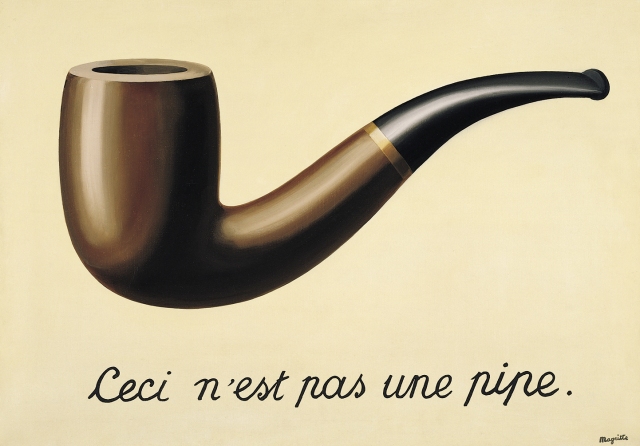
Ceci N’est Pas Une Pipe (The Treachery of Images), Rene Magritte, 1928-29, oil on canvas, 63.5 x 93.98 cm, Los Angeles County Museum of Art, Los Angeles, California, US
René Magritte was born in November 21st 1898, in Lessines, Belgium. He died in August 15th 1967, in Brussels, Belgium. Another artist who lived to see the beginning and end of the Surrealist movement.
Though Magritte was not as well known for his art as Salvador Dali, there was one painting that took a good hold of its audience, and that was The Treachery of Images.
Firstly, the subject of the painting was not as necessary as other paintings; where Dali’s The Persistence of Memories painting had lots of meaning behind each visual aspect, therefore the subject of the painting being highly important to the understanding of the meaning behind the painting, The Treachery of Images could be of anything. A pipe, a horse, a shoe. The subject of the pipe isn’t even in the title of the painting itself. What Magritte considered to be the key aspect of surrealist art was not what it looked like, but rather what it meant.
The French below the image of the pipe is translated into English as “This is not a pipe”. But many who first saw it criticized that it was indeed a pipe. It had the shape of a pipe, it had the natural colours of a pipe, and it is clear that Magritte put effort into finely painting it out so that people could easily recognize it as a pipe. So why does he also write that it is not?
Magritte is telling us that the pipe is not a pipe; he is making us realize and remember that we are not looking at an actual pipe, but just a good painting of one. By falling for the illusion of this visual misunderstanding, we are being deceived by artists who succeed in painting realism, hence the suiting title of the painting, The Treachery of Images. Because at the time, cameras were in use (as the first camera was invented in 1827[1]); Magritte and the Surrealists were trying to abolish the notion that paintings should be treated as photos when cameras could already produce life-like images more efficiently (albeit without colour at the time).
If not use art and painting for replicating and recording what surrounds us, what should we use it for then? Well, why not replicate and record what we cannot see, hear, or directly communicate with during the day? Why not imagine with paint, create something new with charcoal, or even alter the very fabric of our realities with marble, wood, clay?
[1] https://www.reference.com/history/first-camera-invented-422579aae26bb8a8#
